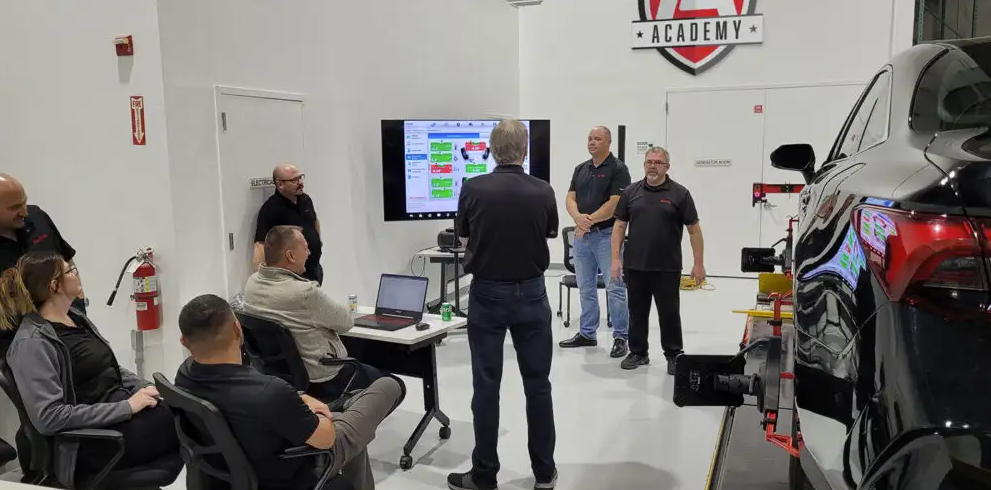Introduction
For bodyshops and collision services, investing in ADAS technologies, including calibration equipment, offers both challenges and opportunities. This post explores the cost-benefit analysis of ADAS, focusing on long-term financial gains, improved customer retention, enhanced safety, and new revenue streams.

Initial Investment Costs
- Equipment and Tools:
- Diagnostic Tablets: Workshops need to invest in high-quality diagnostic tablets, which can range from $2,590 for the cheapest tablet with ADAS to $6,195 for the newest tablet with EV diagnostic capabilities (See how to choose a tablet)
- Calibration Frames and Targets: Essential for precise ADAS calibrations, these can cost several thousand dollars. This bundle for example would enable a shop to be able to do Lane Departure Warning calibrations (and put it in the back of your trunk!) whereas this bundle can do calibrations for all ADAS systems, plus wheel alignment verification.
- Software and Updates: Regular software updates are necessary to keep the equipment compatible with the latest vehicle models, often involving subscription fees. Software updates are tablet-specific; this software update card, specifically for the Autel MS909, gives you the most recent vehicle diagnostics coverage and extends your warranty for another year. If you have one of the select few tablets that is capable of ADAS calibrations such as the MS906PRO, MS909, or MSULTRA, this upgrade card unlocks ADAS calibration capabilities on your tablet.
- Training and Certification:
- Technician Training: Investing in training programs to ensure technicians are certified and skilled in ADAS technologies. Courses can range from a few hundred to several thousand dollars per technician.
- Certification Costs: Obtaining certifications from recognized bodies to ensure compliance with industry standards.
- There are in-person courses through I-CAR or Autel, which provide a hands-on learning experience.
- If you want to learn about ADAS at your own pace, there is content online through I-CAR here
- For more information, see How do I get trained in ADAS calibrations?
- Facility Upgrades:
- Space and Infrastructure: Some ADAS calibration procedures require specific environmental conditions (e.g., level ground, controlled lighting). We generally recommend a 30’x50′ area with level floors to be able to do calibrations.
Long-Term Financial Benefits
- Revenue Streams:
- Calibration Services: Offering ADAS calibration services can attract customers who require these specialized services after repairs or windshield replacements.
- For example, in California, you can make up to $350 per radar calibration, for just an hour of labor. See how we can do it in around half an hour.
- What to charge for ADAS Calibrations
- Customer Retention:
- Enhanced Service Offerings: Providing advanced ADAS services can differentiate a workshop from competitors, creating an expertise halo. You will be able to answer all of the questions around ADAS calibrations, versus shuffling questions and answers with a dealership. ADAS expertise and capabilities are something you and your shop can advertise!
- Customer Trust and Safety: Customers are likely to return to a workshop that ensures their vehicle’s safety features are functioning correctly.
- Safety Improvements:
- Liability Reduction: Ensuring ADAS systems are correctly calibrated reduces the risk of liability claims from customers in case of system failures.
- Accident Reduction: Properly calibrated ADAS systems can significantly reduce the likelihood of accidents, leading to fewer returns and complaints.
Cost-Benefit Analysis
- Initial Costs vs. Revenue Potential:
- Break-Even Point: Calculate the break-even point by comparing initial investment costs with projected revenue from ADAS services. This is likely lower than you think. Even with a $20,000 investment in equipment, that would mean only 58 front radar calibrations at $350 to break-even.
- Long-Term Gains: Consider the potential for long-term gains through increased service offerings and customer retention.
- Operational Efficiency:
- Shortened cycle times: Efficient and quick ADAS calibrations can reduce cycle times, increasing the number of vehicles serviced per day. No need to wait for the dealership to send the car back.
- Streamlined Processes: Investing in high-quality equipment can streamline diagnostic and calibration processes, improving overall efficiency. The IA900 for example, has motors built into the frame that allow you to adjust the height quickly and precisely. This makes calibrations much quicker than the MA600, which requires a more manual process.
- Market Demand:
- Growing ADAS Adoption: As ADAS features become standard in more vehicles, the demand for calibration and maintenance services will increase.
- Competitive Advantage: Early investment in ADAS technology can position a workshop as a market leader, leading to more business.
Conclusion
Investing in ADAS technology requires a significant initial outlay, but the long-term benefits can far outweigh the costs. By providing ADAS calibrations and diagnostic services, workshops and dealerships can enhance their service offerings, improve customer retention, and secure a competitive edge in the market.
If you are thinking about getting into ADAS or if you have any questions at all, give us a call at (925) 566-8545.

Leave a Reply